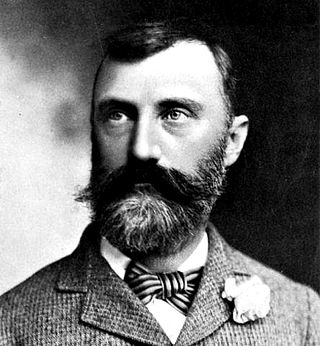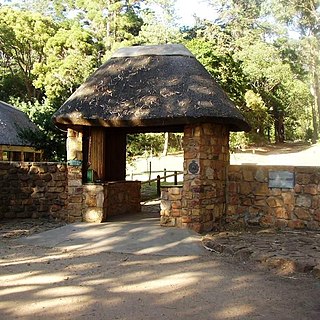
Canoga Park is a neighborhood in the San Fernando Valley region of the City of Los Angeles, California. Before the Mexican–American War, the district was part of a rancho, and after the American victory it was converted into wheat farms and then subdivided, with part of it named Owensmouth as a town founded in 1912. It joined Los Angeles in 1917 and was renamed Canoga Park on March 1, 1931, after Canoga, New York.

Pacific Palisades is a neighborhood in the Westside region of Los Angeles, California, situated about 20 miles (32 km) west of Downtown Los Angeles.

West Hills is a suburban/residential community in the western San Fernando Valley region of the City of Los Angeles, California. The percentage of residents aged 35 and older is among the highest in Los Angeles County.
Newbury Park is a populated place and town in Ventura County, California, United States. Most of it lies within the western Thousand Oaks city limits, while unincorporated areas include Casa Conejo and Ventu Park. The town is located in Southern California around 8 miles (13 km) from the Pacific Ocean and has a mild year-round climate, scenic mountains, and environmental preservation. About 28,000 residents of Thousand Oaks reside in Newbury Park.

The history of Santa Monica, California, covers the significant events and movements in Santa Monica's past.

Topanga State Park is a California state park located in the Santa Monica Mountains, within Los Angeles County, California. It is part of the Santa Monica Mountains National Recreation Area.

The Verdugo Mountains, also known as the Verdugo Hills or simply The Verdugos, are a small, rugged mountain range of the Transverse Ranges system in Los Angeles County, California. Located just south of the western San Gabriel Mountains, the Verdugo Mountains region incorporates the cities of Burbank, Glendale, Pasadena, and La Cañada Flintridge; the unincorporated communities of Altadena and La Crescenta-Montrose; as well as the City of Los Angeles neighborhood of Sunland-Tujunga.

The Santa Monica Mountains National Recreation Area is a United States national recreation area containing many individual parks and open space preserves, located primarily in the Santa Monica Mountains of Southern California. The SMMNRA is in the greater Los Angeles region, with two thirds of the parklands in northwest Los Angeles County, and the remaining third, including a Simi Hills extension, in southeastern Ventura County.

Westside Village is a neighborhood on the west side of Los Angeles, California.

Abbot Kinney was an American developer, conservationist, water supply expert and tree expert. Kinney is best known for his "Venice of America" development in Los Angeles.

TreePeople is an educational and training environmental advocacy organization based in Los Angeles, California. The TreePeople organization advocates and works to support sustainable urban ecosystems in the Greater Los Angeles area through education, volunteer community-based action, and advocacy.

Kenneth Hahn State Recreation Area, or Kenneth Hahn Park, is a state park unit of California in the Baldwin Hills Mountains of Los Angeles. The park is managed by the Los Angeles County Department of Parks and Recreation. As one of the largest urban parks and regional open spaces in the Greater Los Angeles Area, many have called it "L.A.'s Central Park". The 401-acre (1.62 km2) park was established in 1984. The land hs previously been the Baldwin Hills Dam, which catastrophically collapsed in 1963.

Rancho San Francisco was a land grant in present-day northwestern Los Angeles County and eastern Ventura County, California. It was a grant of 48,612 acres (19,673 ha) by Governor Juan B. Alvarado to Antonio del Valle, a Mexican army officer, in recognition for his service to Alta California. It is not related to the city of San Francisco.
Matthew Keller or Mathew Keller (1810–81) was an early agriculturalist, vintner and distiller in Los Angeles, California, shortly after it became part of the United States following the Mexican War. He was also on the county Board of Supervisors and on the Common Council, the city's governing body.

Rancho Sierra Vista is one of the last intact ranches from the first half of the twentieth century in the Santa Monica Mountains. The majority of the landscape is much as it was 100 years ago. The area is now owned by the Santa Monica Mountains National Recreation Area, a unit of the National Park System.

Solstice Canyon is a park within the Santa Monica Mountains National Recreation Area in Malibu, California. Located off Corral Canyon Road from Pacific Coast Highway, the canyon runs north-to-south about a mile east of Point Dume. Solstice Canyon opened on June 20, 1988 and was created out of land owned by Fred and Florence Roberts. Before becoming a park the land was known as Roberts Ranch from 1932 to 1988.

Palisades Park is a 26.4-acre (10.7 ha) park in Santa Monica, California. The park is located along a 1.6-mile (2.6 km) section of Ocean Avenue on top of an uplifted unconsolidated sedimentary coastal Quaternary terrace with exposed bluffs, offering views of both the Pacific Ocean and the coastal mountains.

The Tokai Arboretum was the first large-scale silviculture experimental station in Cape Town, South Africa. The area of the main Arboretum, at Tokai Park, is 14 ha. Several adjacent compartments extend the area to 26 ha. The Arboretum was declared a National Monument in 1985, on its 100th anniversary. It contains stands of Eucalyptus and other trees from the original silviculture experiments in South Africa. In the 1990s a Gondwana Garden was created to display the plants typical of the Cape 100 million years ago.

The Pioneer Oil Refinery was the first successful oil refinery in California, built in 1876 off Pine Street in Newhall, Santa Clarita, California. The Pioneer Oil Refinery was designated a California Historic Landmark (No.172) on March 6, 1935. Pioneer Oil Refinery is the oldest existing refinery in the world. The Lang Southern Pacific Station railroad line served the refinery. In 2020, the refinery was added to the National Register of Historic Places; it is the only site on the National Register of Historic Places within the city of Santa Clarita.




















